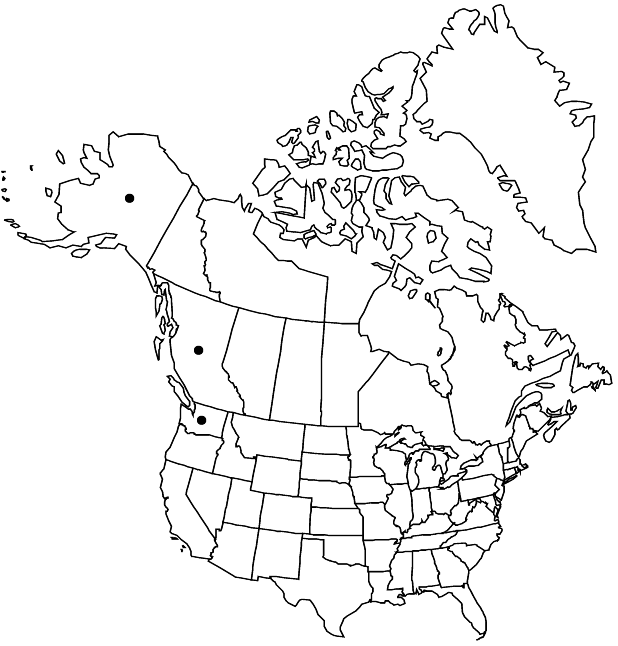Cassiope lycopodioides
Edinburgh New Philos. J. 17: 158. 1834,.
Stems prostrate to weakly ascending, forming loose mats, hairy. Leaves not or somewhat imbricate, closely appressed to stem, not strongly 4-ranked; blade linear-lanceolate, abaxial groove absent, 2–3 × 0.5–1.2 mm, margins conspicuously scarious, curled hairs present at leaf tips (at least on young leaves), abaxial base and adaxial surface hairy. Flowers: sepals 1.5–2 mm, margins hyaline; petals connate for ca. 1/2 their lengths, tips recurved, corolla white, campanulate, 6–8 mm; stamens to 3 mm. Capsules ca. 3 mm.
Phenology: Flowering Jun–Aug.
Habitat: Alpine rocky slopes and crevices
Elevation: 100-2000 m
Distribution

B.C., Alaska, Wash.
Discussion
Subspecies cristapilosa was based on a collection from the Queen Charlotte Islands, British Columbia. The only distinction that the authors drew between it and subsp. lycopodioides was that subsp. cristapilosa has one to three crisped apical hairs on the leaves. Their claim that subsp. lycopodioides has entirely glabrous leaves is not supported. All specimens of Cassiope lycopodioides that I have seen have curled hairs on the leaf apices of at least the young leaves. The hairs appear to be fugacious. However, subsp. cristapilosa does differ from subsp. lycopodioides in several features. It lacks the hyaline leaf margin as well as the adaxial surface and abaxial leaf base pubescence. In addition, the stems are thicker, and the pedicels and corollas are longer. This insular material warrants further investigation.
Selected References
None.
Lower Taxa
"elongating" is not a number.